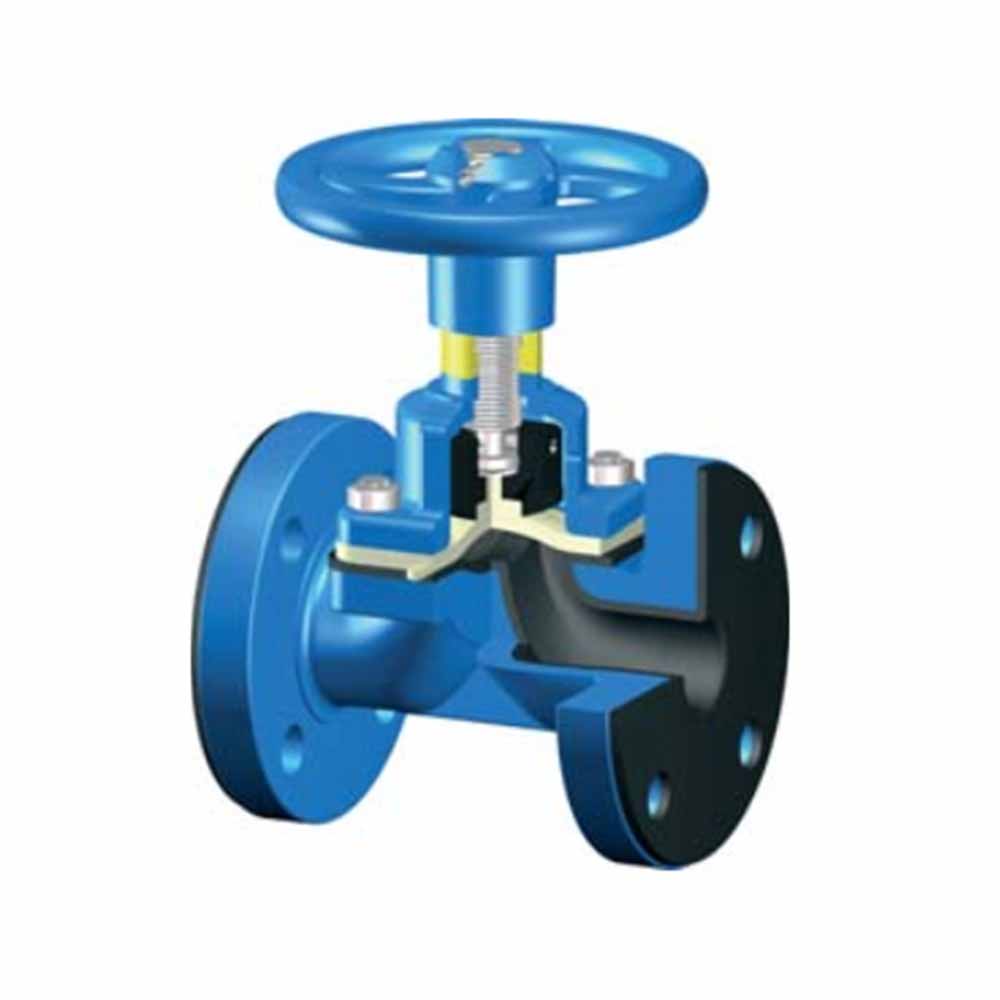Diaphragm Valve
We offer a full range of diaphragm selections engineered to meet the exacting demands of our industrial customers even in the most arduous environments.
Diaphragm valves are excellent for controlling the flow of fluids containing suspended solids. A diaphragm is a flexible, pressure responsive element that transmits force to open, close or control a valve.
Diaphragm valves are used on shut-off and throttling service for liquids, slurries and vacuum/gas.
The seal is achieved by a flexible membrane, usually elastomer, and possibly reinforced with a metal part. The membrane is tensed by the effect of a stem/compressor with lineal movement until contact is made against the seal of the body.
The operating parts of the diaphragm valve are isolated from the flow. This makes this valve suitable for viscous flows and also hazardous, abrasive and corrosive flows as its sealing system avoids any contamination towards or from the environment.
Diaphragm valves are available in a wide variety of metals, solid plastics, plastic, rubber and glass linings. They are well suited to the handling of multiple chemical applications both clear fluids as well as slurries.
The diaphragm valve has an extended use for applications at low pressures and slurry fluid where most other kinds of valves corrode or become obstructed.
Diaphragm valves are available in two basic forms:
Weir Type: The weir design is best for general use applications or for tough corrosive and abrasive services. They are best used to control small flows. The body of the weir-type has a raised lip that the diaphragm comes into contact with. Weir-type valves use a smaller diaphragm because the material does not have to stretch as far.
Straight Through Type: The straight through type can be used in situations where the flow direction changes within the system. The body of this design has a flat bottom that is parallel to the flow stream. This allows the flow to move uninhibited through the valve with no major obstructions. A flexible material is required for the diaphragm so that the mechanism can reach the bottom of the valve body; this can shorten the life span of the diaphragm. They are excellent for use with sludge, slurries and other viscous fluids but they are not well suited for high temperature fluids
Additional information
| Diameter ranges | From 0.25" to 14". |
|---|---|
| Connection to the pipe | Butt-weld, Clamp, Flange, Screwed, Socket and Spigot Weld. |
| Diaphragm material | Buna N (NBR), Butyl (CIIR), Ethylene Propylene Rubber (EPDM), Hypalon® (CSM), Natural Rubber (NR), Neoprene (CR), PTFE and Viton® (FKM). |
| Body Material | Stainless Steel, Stainless Steel 316, Cast Stainless Steel, Cast Iron, Ductile Iron, Pve-U, PVC-C, PP, PP-H, PVDF |
| Temperature range | From -10ºc (-14ºF) up to +170ºC (+350ºF) – (Depending on material). |
| Pressure range | From 13.8 bar (200psi) – (Depending on material). |
| Fluid Velocity limitation | 15-20 ft/sec for clean fluids and 8-10 ft/sec for slurries. |
| Typical applications | Chemical, Fossil Power Plants, Pharmaceutical, Mining, Nuclear Power Plants, Water treatments. |
| Features | Wide range of diaphragm materials |

